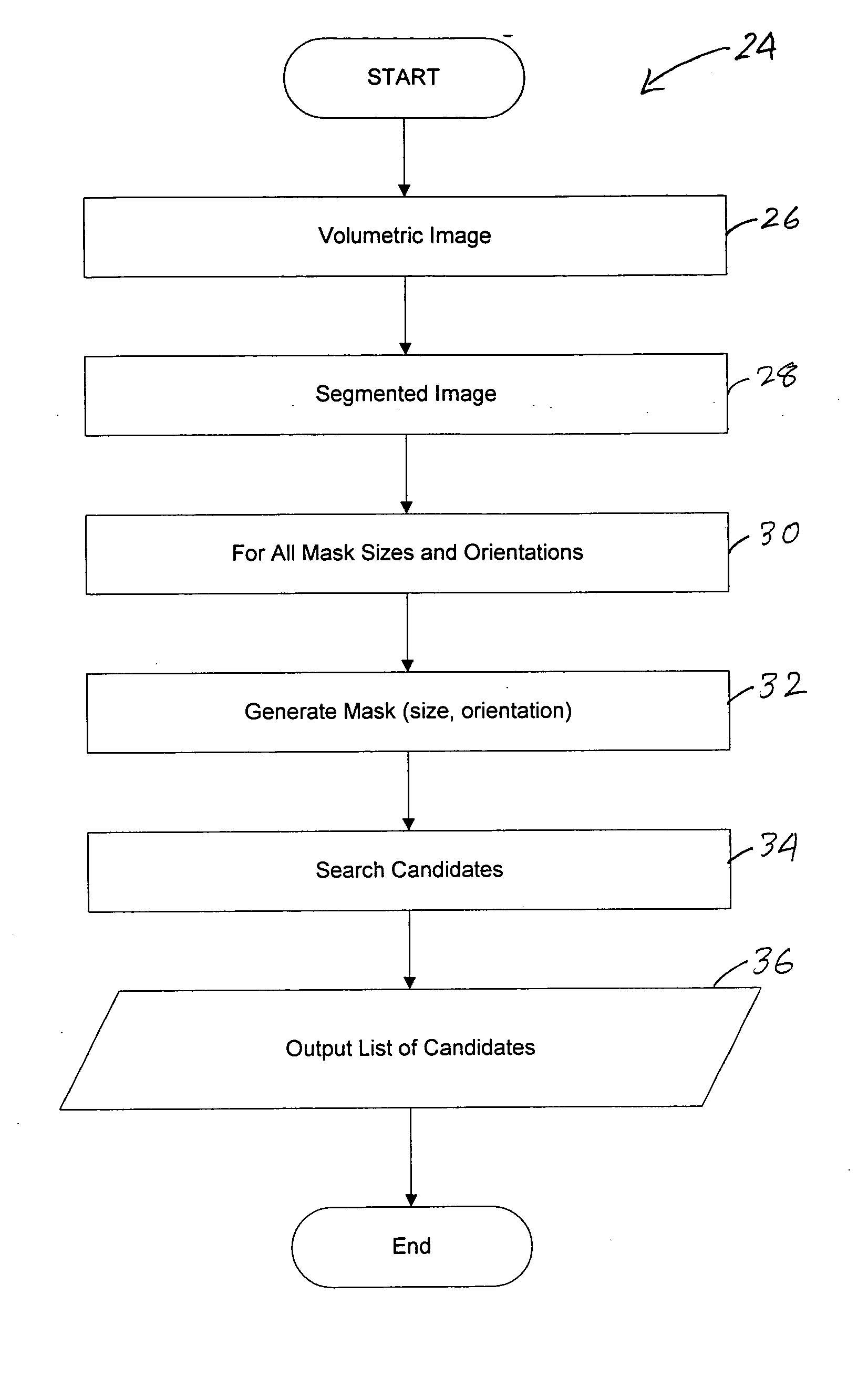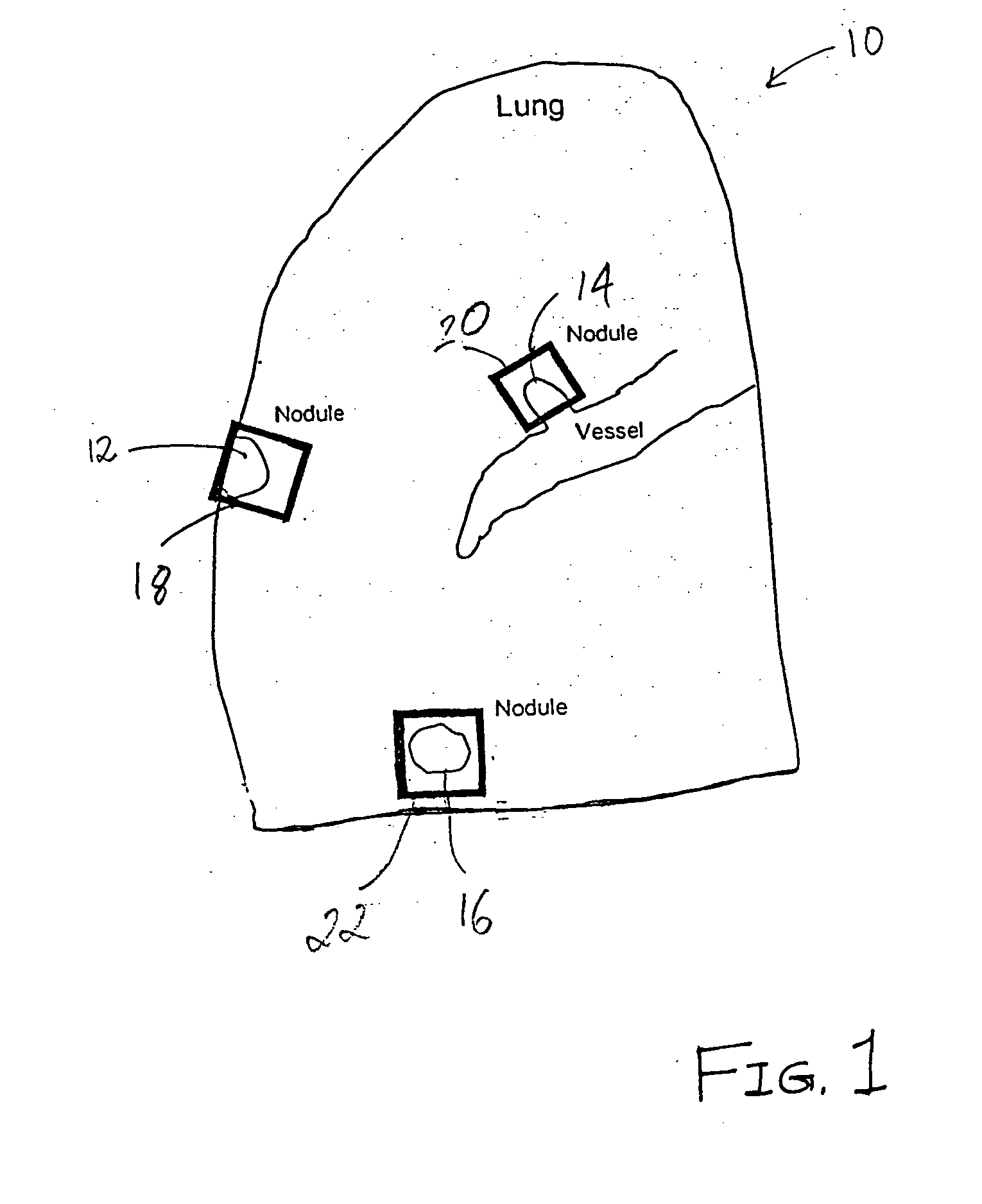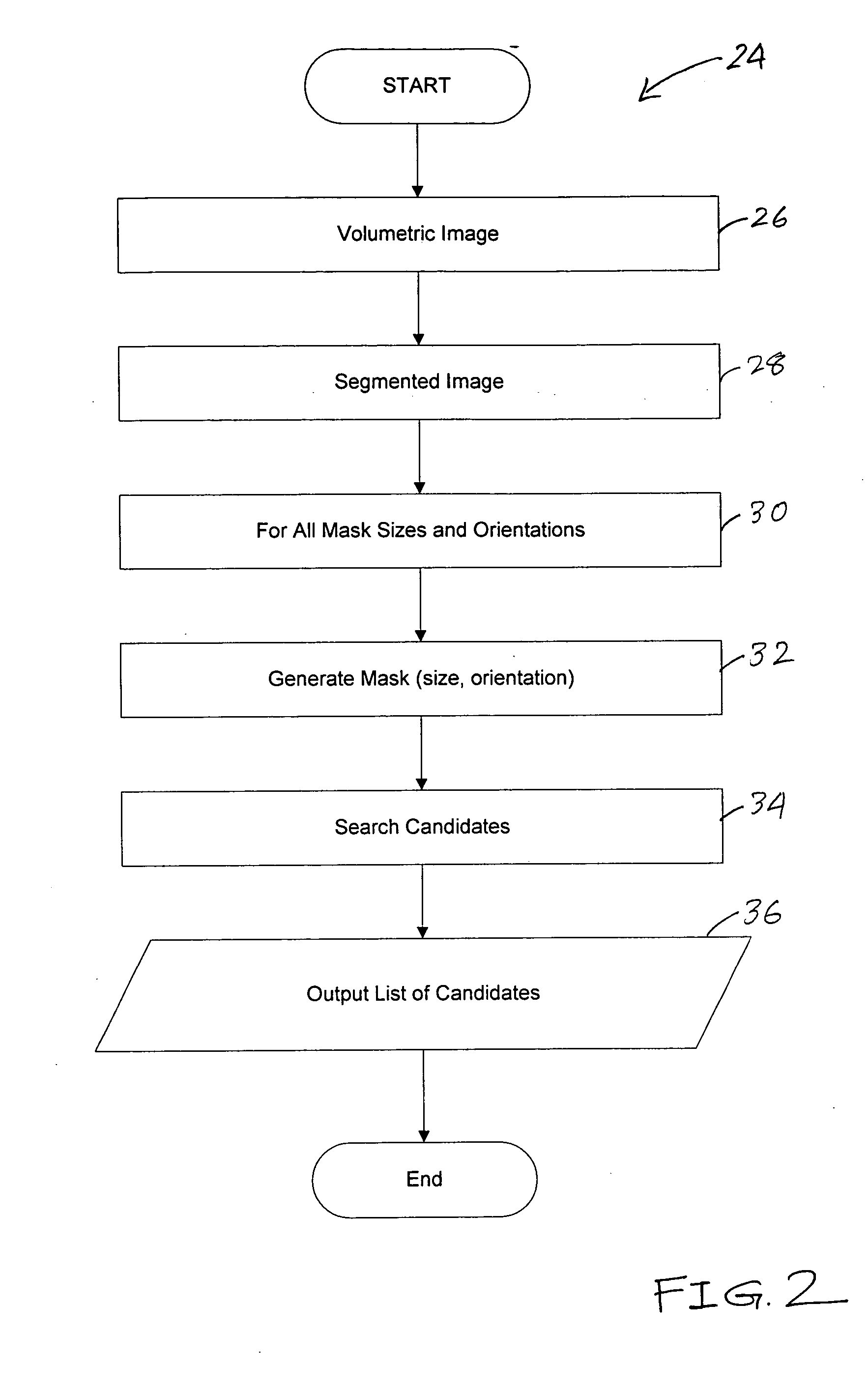System and method for determining compactness in images
a compactness and image technology, applied in the field of image processing, can solve the problems of complex task of three-dimensional object detection, impractical technique, and further compounding of 3-d recognition, and achieve the effect of rapid detection of such nodules and computationally less intensive procedures
- Summary
- Abstract
- Description
- Claims
- Application Information
AI Technical Summary
Benefits of technology
Problems solved by technology
Method used
Image
Examples
Embodiment Construction
[0022] The preferred embodiments of the present invention will be described with reference to the appended drawings.
[0023]FIG. 1 is an illustrative diagram showing lung nodules with exemplary masks. At least one embodiment of the present invention can be utilized to detect solid pulmonary nodules. However, the those skilled in the art will realize that the pulmonary nodules are only used as a typical example to illustrate, and any structure with a known geometry in a volumetric image can be detected. For example, tumors, cysts, etc., can be detected. Further, although the appended drawings are in two dimensions for clarity in illustration, the embodiments of the present invention operate on three-dimensional images.
[0024] A typical image captured by a medical imaging device is a volumetric image. The cross-section 10 of an exemplary volumetric image is a part of a lung scan. Three illustrative nodules 12, 14 and 16 are shown along with corresponding masks 18-22. The input image fr...
PUM
 Login to View More
Login to View More Abstract
Description
Claims
Application Information
 Login to View More
Login to View More - R&D
- Intellectual Property
- Life Sciences
- Materials
- Tech Scout
- Unparalleled Data Quality
- Higher Quality Content
- 60% Fewer Hallucinations
Browse by: Latest US Patents, China's latest patents, Technical Efficacy Thesaurus, Application Domain, Technology Topic, Popular Technical Reports.
© 2025 PatSnap. All rights reserved.Legal|Privacy policy|Modern Slavery Act Transparency Statement|Sitemap|About US| Contact US: help@patsnap.com



